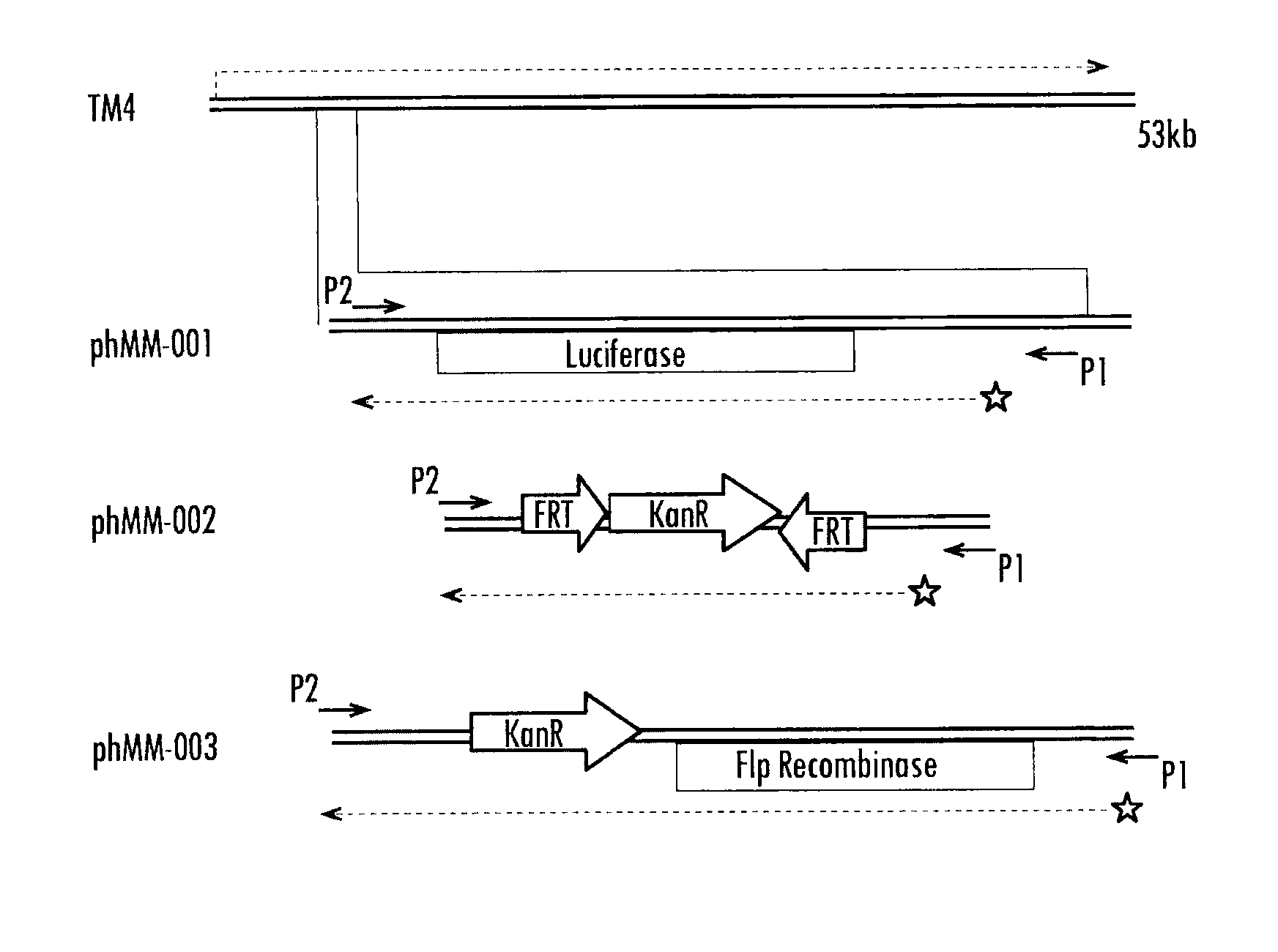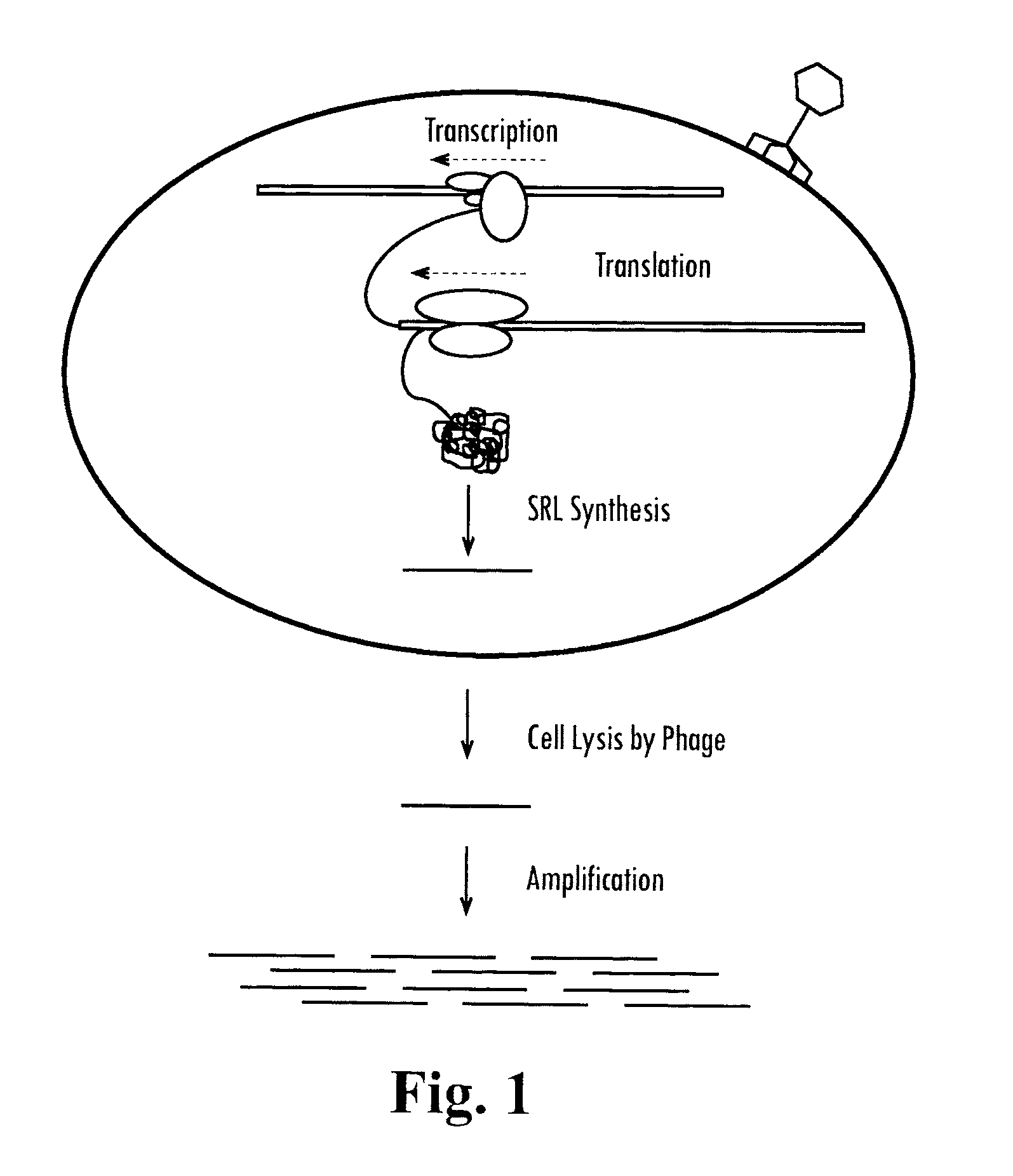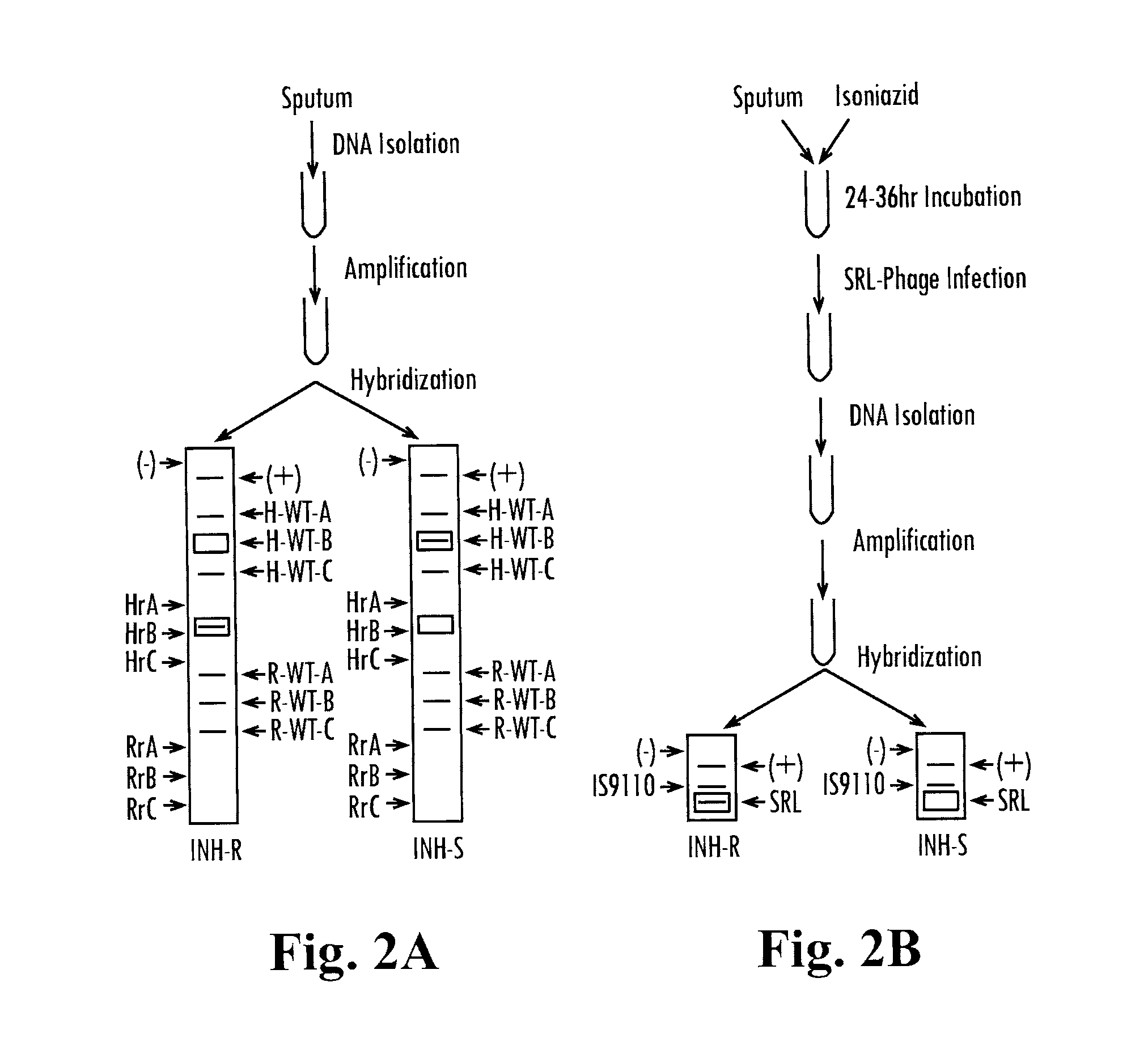Methods and compositions for determining the pathogenic status of infectious agents
a technology of infectious agents and compositions, applied in the field of methods and compositions for improving the diagnosis of infectious diseases, can solve the problems of false identification, high dependence, and inability to distinguish the metabolic activity of cells or even their structural integrity, and achieve the effects of assessing drug susceptibility, convenient use, and effective diagnostic and therapeutic tools
- Summary
- Abstract
- Description
- Claims
- Application Information
AI Technical Summary
Benefits of technology
Problems solved by technology
Method used
Image
Examples
example 1
Novel Mycobacteriophage Recombinase System for Identifying Antimicrobial Resistant Mycobacteria
Mycobacteriophages Encoding Transcriptionally Regulated Cre Recombinase and Signature Tagged LoxP Sites.
[0113]phAE142 is the mycobacteriophage currently used in the LRA assay (Albert Einstein College of Medicine, Bronx, N.Y.). High levels of luciferase enzyme are produced by placing its transcription under the control of the robust L5 Pleft promoter. An additional advantage of this promoter is that it is exquisitely silenced by the L5 gp71 polypeptide, thereby negating the toxic effects of luciferase to viral growth during preparation of high-titer stocks by using Mycobacterium smegmatis (M.smeg) host cells that constitutively express gp71. In the present invention, the luciferase open reading frame (ORF) of phAE142 is replaced with, for example, the Cre recombinase gene from bacteriophage P1 using established molecular biology techniques. Cre is under control of the Pleft promoter in orde...
example 2
Novel Mycobacteriophage Transcription System for Identifying Antimicrobial-Resistant Mycobacteria
[0115]This example shows the rationale for an RNA-based SML reporter phage. This strategy employs the Sp6 RNA polymerase to generate an otherwise absent phage-encoded RNA. To accomplish this, the luciferase ORF of phAE142 is replaced with the Sp6 RNA polymerase from Salmonella typhimirium and is under Pleft transcriptional control. Additionally, the Sp6 promoter is integrated into an otherwise transcriptionally silent locus in the phage genome. Sp6-dependent RNA transcripts can then be detected using any NAA technology capable of detecting RNA.
RNA-Based SML Reporter Mycobacteriophage
[0116]phAE142 is a TM4-based reporter phage. An advantageous feature of TM4 is that all of the known ORFs are contained on one strand of the double stranded genomic DNA and all are transcribed from a single promoter at one end of the genome (FIG. 7). Consequently, only one strand of phage RNA is transcribed d...
examples 3-4
[0117]The following examples incorporate SML-phage technology of the present invention into Hain's GENOTYPE® MtbDR test, an existing genetic test for Mtb drug resistance, in order to demonstrate how present invention simplifies molecular-genetic tests for drug resistance and how it can be expanded to detect resistance to any drug. Furthermore, other applications of the present invention for the detection of viable and drug resistant bacteria are illustrated. Either of the two types of SML reporter phages explained in the previous examples can be used in the following examples depending on which method of NAA is used: DNA or RNA-based (e.g. PCR or RT-PCR).
PUM
| Property | Measurement | Unit |
|---|---|---|
| time | aaaaa | aaaaa |
| time | aaaaa | aaaaa |
| time | aaaaa | aaaaa |
Abstract
Description
Claims
Application Information
 Login to View More
Login to View More - R&D
- Intellectual Property
- Life Sciences
- Materials
- Tech Scout
- Unparalleled Data Quality
- Higher Quality Content
- 60% Fewer Hallucinations
Browse by: Latest US Patents, China's latest patents, Technical Efficacy Thesaurus, Application Domain, Technology Topic, Popular Technical Reports.
© 2025 PatSnap. All rights reserved.Legal|Privacy policy|Modern Slavery Act Transparency Statement|Sitemap|About US| Contact US: help@patsnap.com



